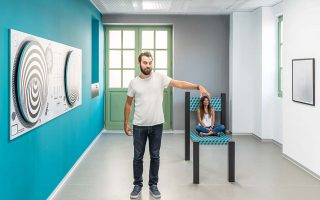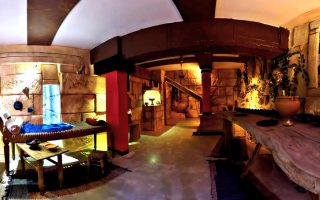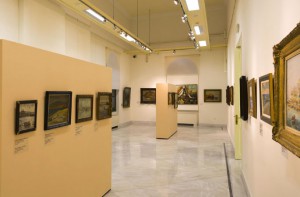 Opened in 1957, the Piraeus Municipal Gallery features theatrical costumes, photographs, programmes, and other theatrical material. While its permanent home at the Old Post Office is currently being restored, the gallery is temporarily housed at the Piraeus Municipal Theatre.
Opened in 1957, the Piraeus Municipal Gallery features theatrical costumes, photographs, programmes, and other theatrical material. While its permanent home at the Old Post Office is currently being restored, the gallery is temporarily housed at the Piraeus Municipal Theatre.
The collection includes a major representation of the sculpture of G. Kastriotis, an extensive collection of folk art by St. Lazarou and personal effects donated by Greek actor Manos Katrakis.
A special area is reserved for the works of Nikiforos Lytras, M. Axelos, P. Vizantios, K. Volanakis, G. Geralis and other artists from Piraeus.
Source: www.athensattica.gr
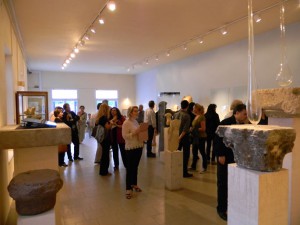
Given to the Greek state by the family of former Prime Minister Koryzis in 1941, the museum was built in the 1960s at the site of the old Koryzis residence. Exhibited objects date from the Mycenaean Era to the earliest centuries of Christianity.
Retrieved from excavations throughout Troezen and Ermioni, the collections include sculptures, inscriptions and important architectural discoveries.
The plaster copy of a 480 BC column from Troezen, bearing Themistocles’ appeal to Greeks to resist the Persian invaders, is the museum’s most famous artefact. Visitors hoping to see the original will have to visit the Epigraphic Museum of Athens.
Source: www.athensattica.gr
Donated to the Greek State by the Society of Kythera in 1975 and renovated in 1981, the Archaeology Museum of Kythera is housed in a small, early-20th-century building. The museum’s collection includes the most important findings from excavations in the area, dating from prehistoric times until the Venetian occupation.
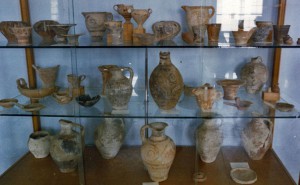 Items from the Byzantine era, mostly icons and holy objects of worship are displayed at the church of the Holy Assumption in Kato Livadi, while many excavated artefacts are stored in the Archaeology Museum of Piraeus. In the early 1990s, the museum was expanded and now includes a small guesthouse.
Items from the Byzantine era, mostly icons and holy objects of worship are displayed at the church of the Holy Assumption in Kato Livadi, while many excavated artefacts are stored in the Archaeology Museum of Piraeus. In the early 1990s, the museum was expanded and now includes a small guesthouse.
Source: www.athensattica.gr

Covering some 1,400 square metres, the Archaeological Museum of Piraeus houses an amazing array of artefacts, dating from prehistoric times to the early Christian era.
As the most important port in the Mediterranean, Piraeus prospered throughout antiquity, creating a modern city filled with priceless archaeological treasures. While most finds come from official archaeological excavations, many incidental discoveries made during reconstruction of the modern city are also on display.
Donations from private collections, such as Meletopoulos-Nomidou and Geroulanon, add to the riches on display in the two-storey exhibition space. With two full floors serving as exhibition halls, and a basement housing conservation laboratories and warehouses, this museum is truly world-class in scope.
Source: www.athensattica.gr
Built in the late 1960s to house artefacts from excavations at the sanctuary of Artemis in Vravrona, this small museum is located less than one kilometre from the Vravron archaeological site.
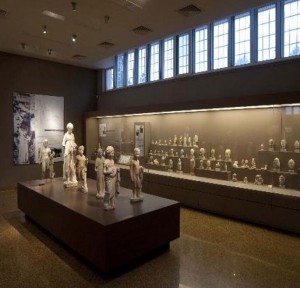 Findings from throughout the region of Messogia are exhibited on the upper floor, which also includes a patio. Other exhibits include findings from the Vravron region, as well as items from nearby Merenda, dating from the prehistoric (early Copper) period to the Roman era.
Findings from throughout the region of Messogia are exhibited on the upper floor, which also includes a patio. Other exhibits include findings from the Vravron region, as well as items from nearby Merenda, dating from the prehistoric (early Copper) period to the Roman era.
The largest part of the exhibition, though, is dedicated to findings from the sanctuary of Artemis at Vravrona, the most important being sculptures of ‘she-bears’, young girls dedicated to Artemis.
Video by fabdrone
Source: www.athensattica.gr
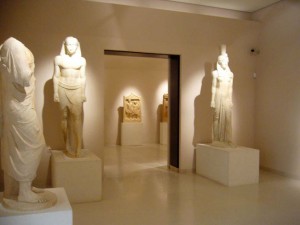
Surrounded by large tracts of agricultural land, the museum was built in 1975 near the famous site of Marathon.
Fully renovated in 1994, the museum houses five thematic exhibition rooms, a patio and a large storage basement. Its collections come directly from excavations in the surrounding area and include items from the Neolithic period to the late Roman era, the most famous being from the Tomb of the Athenians and the prehistoric burial grounds.
Source: www.athensattica.gr
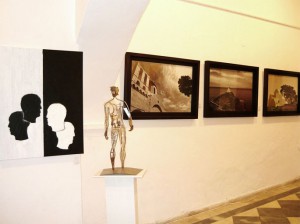 Named in honour of Greek actress and politician Melina Merkouri, the Art and Concert Hall of Hydra is located on the port’s promenade, just west of the statue of Andreas Miaoulis.
Named in honour of Greek actress and politician Melina Merkouri, the Art and Concert Hall of Hydra is located on the port’s promenade, just west of the statue of Andreas Miaoulis.
Housed in the Lazaros Koudouriotis residence, its lovely arcade and exquisite marble floors create a stunning first impression, surpassed only by the distinguished exhibitions, concerts and cultural events hosted here.
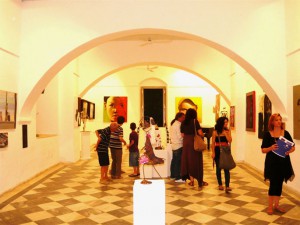 Exhibiting a variety of works by prominent artists each year, the Hall confirms Hydra’s reputation as the island of culture and artists.
Exhibiting a variety of works by prominent artists each year, the Hall confirms Hydra’s reputation as the island of culture and artists.
Source: www.athensattica.gr
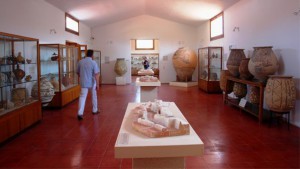
Founded in 1828, the Archaeological Museum of Aegina was the first museum established in the free Greek state.
Originally housed in the Eunardios School, it later moved to its current location next to the Kolona archaeological site.
With three exhibit halls, the museum displays artefacts from the Neolithic to the Roman era. A recreation of an early Helladic house, local ceramics from the seventh to fifth century BC, rare inscriptions and fragments from the ancient temples of Apollo and Aphaia are among the highlights.
The museum’s first exhibit, portions of reliefs from the collection of Ioannis Kapodistrias deriving primarily from Rinia are still on display.
Source: www.athensattica.gr
Opened in 2004, the Kifissia Archaeological Collection is located in a 1930s house, with exhibits on the main floor and an archaeological laboratory below ground level. Derived from excavations on private and public digs, the exhibits highlight the importance of northern Attica’s ancient cities. The area of Kifissia was continuously inhabited from the Geometric period until the Roman era, according to the archaeological evidence.
Important finds from Kifissia, Maroussi and Pallini are on display, with the excavations of Attiki Odos well represented. Also of note is the collection of Roman sculptures, from the period when Herod Atticus was based in Kifissia. The exhibition’s most famous artefact is the headstone of Archestratus, discovered near the bed of the Panagitsas stream in Pallini and dating from 340 to 330 BC.
The museum also showcases ceramics from all eras of antiquity, as well as bronze vases from local cemeteries.
Museum presentation: www.kifissia.gr
Source: www.athensattica.gr
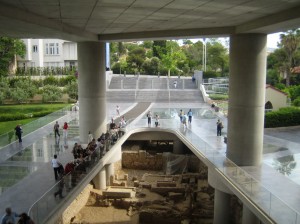 With a subway station conveniently located near its front entrance, the New Acropolis Museum contains the most important artefacts found on the “sacred rock.” Containing rare objects from the Mycenaean era to the Roman and early Christian ages, it is an absolute “must see” for visitors. Since Opening in 2009, millions of visitors have gazed in wonder at the Parthenon sculptures adorning its rooms. And, through the large overhead windows, visitors can simply look up to be overwhelmed by the sheer size and beauty of the ancient monuments towering above the museum.
With a subway station conveniently located near its front entrance, the New Acropolis Museum contains the most important artefacts found on the “sacred rock.” Containing rare objects from the Mycenaean era to the Roman and early Christian ages, it is an absolute “must see” for visitors. Since Opening in 2009, millions of visitors have gazed in wonder at the Parthenon sculptures adorning its rooms. And, through the large overhead windows, visitors can simply look up to be overwhelmed by the sheer size and beauty of the ancient monuments towering above the museum.
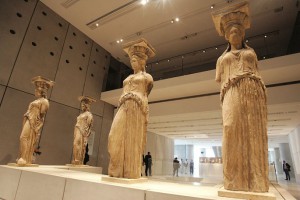 Replacing the old museum that had operated since the 19th Century in the building complex adjacent to the Parthenon. the New Acropolis Museum displays its invaluable collection of ancient artefacts with a modern twist; Built on high pillars directly above the Roman era archaeological site, visitors can look down through the transparent floors to view these rare artefacts. It is worth noting that since many of the principal exhibits require special lighting conditions to insure their preservation, the museum uses a substantial amount of natural light for its illumination.
Replacing the old museum that had operated since the 19th Century in the building complex adjacent to the Parthenon. the New Acropolis Museum displays its invaluable collection of ancient artefacts with a modern twist; Built on high pillars directly above the Roman era archaeological site, visitors can look down through the transparent floors to view these rare artefacts. It is worth noting that since many of the principal exhibits require special lighting conditions to insure their preservation, the museum uses a substantial amount of natural light for its illumination.
Museum web site: www.theacropolismuseum.gr
Source: www.athensattica.gr





